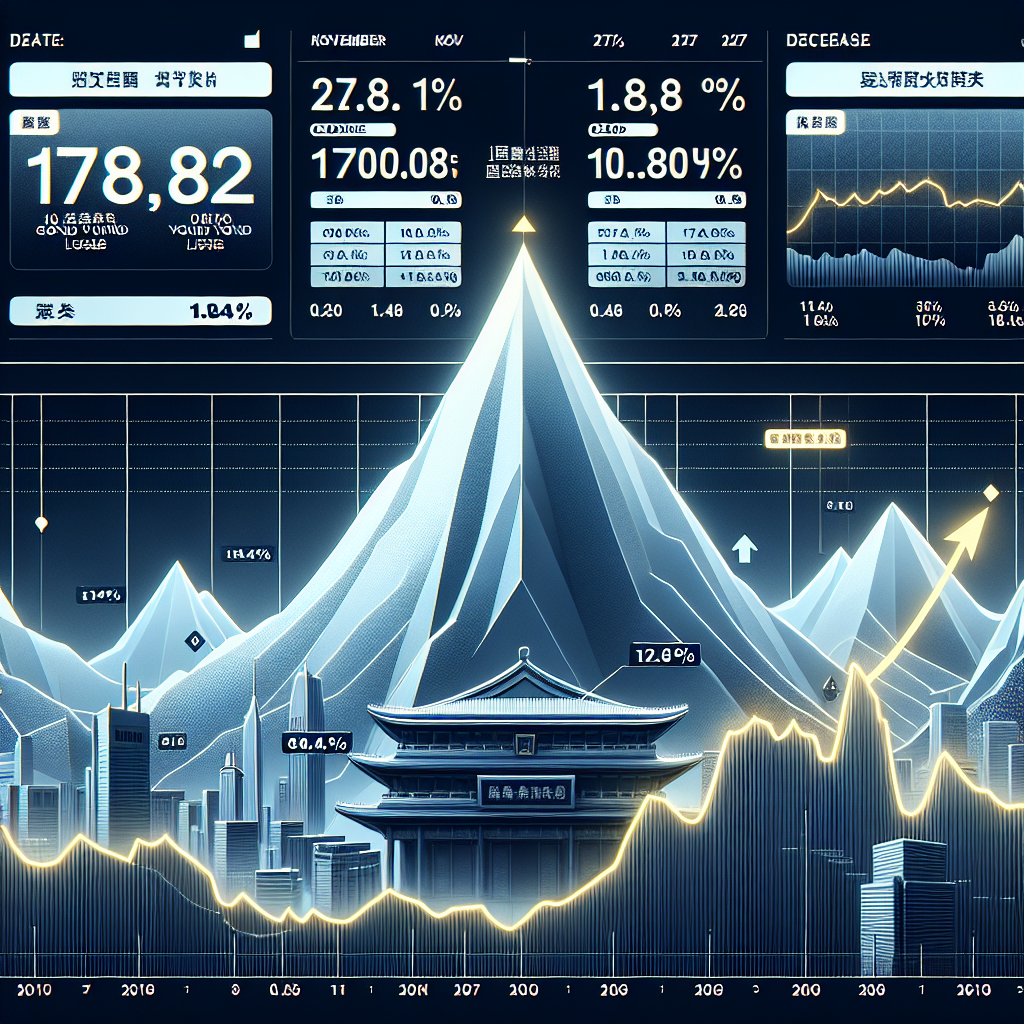In recent days, China’s bond market has been under pressure with long-term bond yields rising. On November 27th, most of the bond futures closed lower, with the 10-year government bond yield rising to 1.84%. The bond market saw a decrease of nearly 170 billion yuan in the third quarter in a 10 trillion yuan bond fund. Analysts believe that the market’s expectation of a rate cut by the central bank cooling down, the implementation of new bond policies, and the increasing anticipation of default on Evergrande’s debt are the main reasons for the pressure.
As of Thursday (November 27th) market close, the yield on China’s 10-year government bond “25 Coupon Bond 16” rose by 1 basis point to 1.844%, while the yield on the 30-year government bond “25 Super Long Special Bond 06” increased by 0.35 basis points to 2.1975%, approaching levels from a month ago. Yields on 5-year and 7-year government bond varieties also rose by 1 basis point and 1.25 basis points, respectively.
An analysis published by “Economic Observer” on Thursday pointed out that the bond market has been under pressure recently due to cooling expectations of a rate cut from a policy perspective and concerns in the market about the redemption of “fixed income +” funds and the implementation of new regulations for public fund sales. At the same time, the Evergrande bond extension turmoil has impacted market sentiment, primarily bearish for credit bonds, but pressure on redemption may also affect interest rate bonds.
A recent announcement by Evergrande on Wednesday stated that the company is seeking approval from bondholders to postpone the redemption of 2 billion yuan (280 million US dollars) domestic bonds due on December 15th.
Fincare Financial Consulting, a policy consultation platform, stated that the ultimate outcome for Evergrande may still be an extension, and for real estate bonds, an extension essentially equals default. Frankly, this is quite sudden and far beyond expectations.
According to a report by “Securities Times,” in the third quarter of this year, the total scale of bond funds, amounting to 10 trillion yuan, shrank by nearly 170 billion yuan, with pure bond funds experiencing a significant reduction of 770 billion yuan in size, while hybrid bond funds saw an increase of about 500 billion yuan, indicating a noticeable slowdown in overall growth trajectory.
Bond funds primarily invest in fixed-income assets such as government bonds, financial bonds, and corporate bonds by pooling funds from investors and managing them by professional fund managers to achieve relatively stable returns.
Pure bond funds are funds dedicated to investing in bonds and do not include equity assets such as stocks.
Hybrid bond funds invest in a mix of assets including stocks and bonds with the aim of seeking higher returns through stock investments while maintaining controllable risks.
Wind data shows that in the third quarter of this year, over 70 public fund managers witnessed a decline in size, primarily due to the significant reduction in the scale of bond funds.
A senior executive from a public fund managing over 10 billion yuan in assets mentioned, “Our company’s size dropped by 3 billion yuan in the third quarter.” Another mid-ranking executive from the industry commented, “Our company’s size shrank by over 5 billion yuan in the third quarter.”
A foreign asset manager from a public fund remarked, “The reduction in the scale of bond funds is the result of multiple factors coming together, but the impact of industry policy adjustments on sector reform is more profound and long-lasting.”
A review by “Securities Times” found that since August 2025, the bond market has experienced at least three significant policy adjustments.
The first is the Ministry of Finance’s introduction of a bond tax adjustment plan, reinstating the collection of value-added tax on interest income for government bonds, local government bonds, financial bonds, and other varieties.
The second is the China Securities Regulatory Commission’s revision of regulations on the sale expenses of public funds after 13 years, proposing punitive rates of no less than 1.5%, 1.0%, and 0.5% for the redemption of funds in the medium and short term.
The third is recent releases by regulatory authorities related to fund performance benchmark documents, clarifying the performance benchmark requirements for active bond funds.

